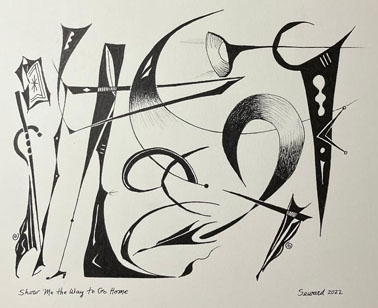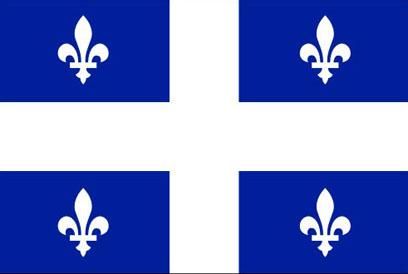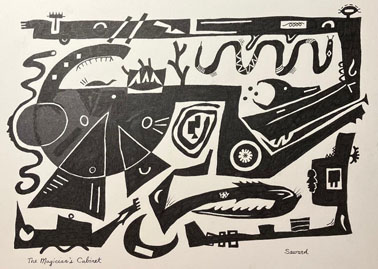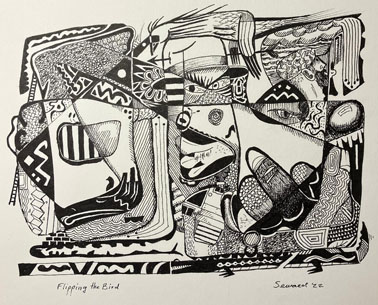October 2022 Quebec election like June 2022 provincial election in Ontario (in some ways at least)
Oct 6th, 2022 | By Counterweights Editors | Category: In BriefCOUNTERWEIGHTS EDITORS, GANATSEKWYAGON, ON. OCTOBER 6, 2022. We at least ought to be living in an era that is growing increasingly more aware of its own history. (In any case, we seem to be increasingly faced by key current issues with deep roots in a past we understand imperfectly at best.)
Here in the Ganatsekwyagon region of Ontario — originally an imperial project of the Seneca from what is now Western New York State — the Parliament of the United Kingdom some 182 years ago passed the Act of Union, which more or less merged the British colonial governments of Lower Canada (present-day Quebec) and Upper Canada (present-day Ontario).
Eight years later, in March 1848, Governor General Lord Elgin recognized Louis-Hippolyte Lafontaine’s and Robert Baldwin’s first “responsible government” in the “United Province,” directly accountable to the majority in the elected Legislative Assembly. This marked one historic moment in the growth of modern Canadian democracy — though the moment had already begun when the very first responsible government in what is now Canada appeared in Nova Scotia in February 1848!
The short-lived United Province was again divided into present-day Ontario and Quebec by the British North America Act, 1867 (now known as the Constitution Act, 1867). This was the Act of the UK Parliament that launched the present Canadian confederation (which finally “patriated” its founding documents via the Parliament of Canada’s Constitution Act, 1982).
Quebec and Ontario elections and Canadian democracy in 2022
Present-day Ontario and Quebec were only united in one province for just over a quarter of a century, long ago. The similarities between the Ontario election on June 2, 2022 and the Quebec election on October 3, 2022 nonetheless suggest that what the late Ontario Premier William Davis liked to call the “sister provinces” still have memories of growing up in the same house.
To start with, in the ancient days of the United Province so-called Canada East (Lower Canada/Quebec) and Canada West (Upper Canada/Ontario) had equal numbers of seats in the
elected Legislative Assembly. In 2022 what Quebec now calls its National Assembly has 125 seats. What Ontario is still calling its Legislative Assembly has 124 seats.
With this kind of essential equality still in mind, just a short while back in early June 2022 Doug Ford’s so-called “Progressive” Conservatives (or Ontario PCs) won 83 seats with 40.82% of the province-wide popular vote. And now in early October 2022 François Legault’s Coalition Avenir Québec (or CAQ) won 90 seats with 40.96% of the province-wide vote.
There are some ideological similarities as well between Premier Legault’s CAQ and Premier Ford’s Ontario PCs (at least in the age of the still murky second-generation Ford nation, that has just recently raised the provincial minimum wage by 50 cents).
Both governing regimes seem to be in any case pretending to honour a “progressive conservative” tradition that has its roots in the complex alliances of the imperfect early regional democracy in the United Province, 1848–1867.
(And the complex alliances were among conservatives, liberals, radicals, and others, and among French and English “settlers” — if not exactly already diminishing Indigenous allies, bequeathed by the golden age of the transcontinental Canadian fur trade, 1775–1820, in an alas increasingly assimilationist post-1850s official culture.)
Two quite conservative governments taking big majority of seats with minority of popular vote (and quite different voter turnouts)
Meanwhile, back in the present, there are also reasons to be sceptical about the depth of current progressive pretensions on both sides of the Ottawa River. On various bottom lines the CAQ and the Ontario PCs are now in the second terms of managing essentially quite conservative governments, with similar broad constituencies (allowing that one is majority anglophone and the other majority francophone).
At the same time, M. Legault is a (somewhat old-school?) Quebec (or even French Canadian?) nationalist, and Mr. Ford is a kind of traditional Ontario regionalist. This is vaguely reminiscent of the “Mowat-Mercier Concordat” of the later 19th century, after the Ontario regionalist Oliver Mowat and the Quebec nationalist Honoré Mercier — and of the later 1930s friendship between Ontario Premier Mitch Hepburn and Quebec Premier Maurice Duplessis.
We have two final notes on the same broad subject, tied to this past Monday’s Quebec election.
First, the positions of both the Ford and Legault conservatives in their respective legislatures are strengthened by their divided oppositions — three parties in the 2022 Ontario election, and four in Quebec. (And in Quebec’s case the four opposition parties each won similar shares of the popular vote in 2022, while only two of three parties shared that distinction in Ontario.)
Similarly, in both 2022 cases the somewhat extreme political arithmetic of the current first-past-the-post electoral system has understandably boosted calls for some form of proportional representation, that would give parties a share of seats in the legislature much like their share of the province-wide popular vote.
(To take just the winning parties, in Ontario in June 2022 the Ford PC s won some 67% of seats in the Legislative Assembly with less than 41% of the popular vote. In October 2022 Legault’s CAQ has won 72% of seats in l’Assemblée nationale with less than 41% of the popular vote.)
A 2007 referendum on proportional representation has already proved unsuccessful in Ontario. A June 29, 2022 report from Éric Grenier’s website, The Writ, applied the results of the June 2, 2022 Ontario election to the broad parameters of the particular “mixed-member proportional representation system (MMP)” currently employed by the German state of Baden-Württemberg.
Even in this system, somewhat designed to accommodate M. Grenier’s partiality “to the idea of voters electing people from their individual communities to represent them,” there remain “1st Mandate” and “2nd Mandate” members of the legislature, with only the former altogether directly representing the kind of electoral districts we have now.
In any case again, what Éric Grenier finally said about proportional representation in Doug Ford’s Ontario would also seem to apply to François Legault’s Quebec : “the PC government has no interest in or incentive to make any changes” to the present first-past-the-post system, which does obviously work to its advantage (and that of the CAQ government next door).
There is a final big difference between the 2022 provincial elections in Ontario and Quebec. In Ontario the Ford Conservatives won their disproportionate majority of seats in an election marred by the lowest voter turnout since 1867 (43.5% of all eligible voters)! In Quebec turnout more respectably remained just over 66% — down only slightly from the last election in 2018.
At our editorial meeting this morning all this reminded one among us of her francophone mother from Quebec who migrated to Ontario in 1940, speaking almost no English (in spite of having just married an anglophone man)! One striking difference between the lives of the two provinces she noticed right away : “People in Ontario were not as interested in politics.”









